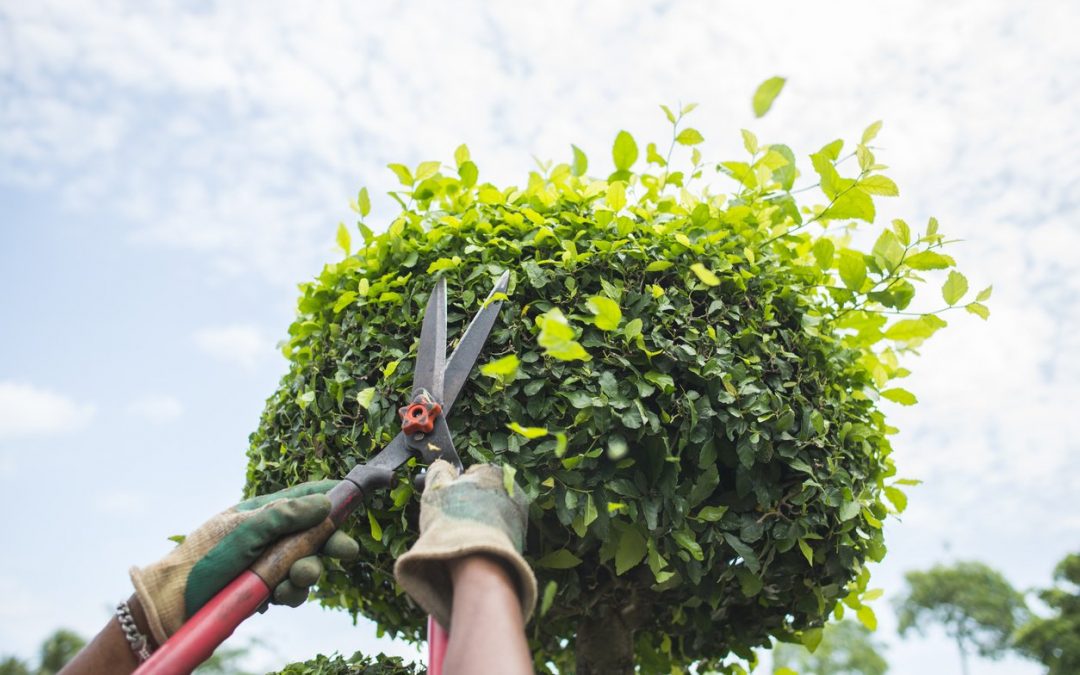Spring is the ideal time to prune trees and shrubs. By pruning in the spring, you can encourage new growth and ensure that your plants have a full season to recover from any damage. However, it’s important to know how to prune properly, as improper pruning can actually harm your plants. First, you’ll need to identify the type of plant you’re pruning. Trees and shrubs are pruned differently, so it’s important to make sure you’re using the correct technique. Once you’ve determined the type of plant, you’ll need to select the right tools. For smaller shrubs, hand pruners will suffice; for larger shrubs and trees, you’ll need a Saw. Next, you’ll need to identify the branches that need to be cut. Dead or damaged branches should be removed first; next, you can remove any branches that are crossing or rubbing against each other.
Finally, you’ll need to make the cuts. When cutting branches, be sure to angle the cuts so that water will run off them easily; this will help prevent disease and rot. With these tips in mind, you can ensure that your trees and shrubs are properly pruned and ready for a healthy spring season.
How to Prune Trees and Shrubs
Pruning is necessary to promote good plant health, remove damaged limbs, encourage new growth and maintain shape. Learn how to prune roses, trees, and shrubs.
Why Prune?
A well-maintained tree or shrub is healthier and looks better — two very good reasons to learn how to prune correctly. Proper tree-pruning and shrub-pruning help:
Maintain Safety: Remove low-growing branches if they impede passing vehicles or obscure oncoming traffic from view. You may also need to take out split or broken branches before they have the chance to come crashing down on a person, car, or building. It’s also wise to prune out low-hanging, whip-like branches (especially those with thorns) that may strike passersby.
Alter or Rejuvenate Growth: Neglected, overgrown shrubs can sometimes be turned into small multitrunked trees if you remove their lower limbs, which may be a better approach than digging out the shrub and planting another in its place.
Direct Growth: Pruning influences the direction in which a plant grows: Each time you make a cut, you stop growth in one direction and encourage it in another. This principle is important to keep in mind when you train young trees to develop a strong branching structure.
Remove Undesirable Growth: Prune out unwanted growth periodically. Cut out wayward branches, take out thin growth, and remove suckers (stems growing up from the roots) and water sprouts (upright shoots growing from the trunk and branches).
Promote Plant Health: Trees and shrubs stay healthier if you remove branches that are diseased, dead, pest-ridden, or rubbing together.
Create Particular Shapes: You can prune a line of closely planted trees or shrubs as a unit to create a hedge. If you’re a hobbyist who practices topiary, you can prune trees and shrubs into fanciful shapes.
Produce More Flowers or Fruits: Flowering plants and some fruit trees are pruned to increase the yield of blossoms and fruit and to improve their quality. You’ll need, for example, to remove spent flowers from roses throughout their bloom time. For some fruit trees, you’ll make many small, precise cuts each dormant season. Although this sort of pruning sometimes ranks as a tedious chore, remember that your efforts will pay off in lavish bloom and generous crops of fruit at harvest time.
When to Prune
Pruning at the wrong time won’t damage plants, but it can sacrifice that year’s flowers or fruit. As a rule of thumb, prune spring-flowering shrubs and trees immediately after the flowers fade. Prune summer-blooming trees and shrubs in winter or early spring, before new growth emerges. In regions that have harsh winters, late-summer pruning encourages new growth that might not harden before the cold settles in.
These guidelines are most pertinent to climates with four distinct seasons and a definite winter chill. In warmer winter areas, timing will vary depending on the particular plant’s native climate. If you have any doubts about the best time to prune a particular plant, ask your Lowe’s nursery specialist or your cooperative extension office for advice.
Pruning in Spring
Many plants, especially deciduous trees and shrubs, are best pruned in late winter or early spring, just before they break dormancy. Once heavy frosts have abated, the plants are less likely to suffer cold damage at the point where you make your cuts. Deciduous plants are still bare, so you can easily spot broken and awkwardly growing branches and decide how to direct growth. And because growth will soon start, your pruning cuts will stimulate new growth in the direction you want.
For flowering trees and shrubs, you’ll need to know whether the flowers are produced on old or new growth. If early spring flowers come on last year’s wood — as in the case of forsythia, flowering quince, and flowering trees such as peach and plum — you’ll lose many flowers by pruning before plants break dormancy. It’s best to leave tree trimming until flowering has finished. Plants such as cinquefoil, which bear flowers on leafy new growth formed in spring, can safely be pruned while dormant.
When removing heavy branches, avoid ripping the bark by shortening the branch to a stub before cutting it off at the branch collar. Use a sharp pruning saw and make these three cuts as described below:
Step 1: Cut From Below
About a foot from the branch collar, make a cut from the underside approximately a third of the way through.
Step 2: Cut the Branch Top
About an inch further out on the branch, cut through the top until the branch rips off. The branch should split cleanly between the two cuts.
Step 3: Cut to the Branch Collar
Make the final cut by placing the saw beside the branch bark ridge and cutting downward just outside the branch collar. (If the branch angle is very narrow, cut upward from the bottom to avoid cutting into the branch collar.)
Pruning in Summer
A second time to prune is in late summer. Some gardeners like to thin plants in summer because it’s easier to see how much thinning is really needed when branches still have thick foliage. And because growth is slower at this time of year, pruning is less likely to stimulate new growth — an advantage when you’re thinning. In cold-winter regions, don’t do summer pruning later than one month before the first frost. If you do, an early frost may damage the plant at the point of the cuts.
Pruning Evergreens
Although evergreen trees and shrubs don’t drop their leaves, they approach a near-dormant state during the winter months. This group includes broadleaf evergreens (such as boxwood and camellia) and conifers (such as spruce and pine). Broadleaf evergreens are usually best pruned in late dormancy or in summer, as outlined above. For flowering broadleaf evergreens, however, timing is a bit more precise; you’ll need to prune with an eye toward preserving flower buds. Prune after bloom for evergreens flowering on last season’s growth; prune before spring growth begins for those that bloom on new growth.
Most conifers are pruned only in their first two or three years in order to direct their basic shape; it’s best to leave them alone from then on. Some of the most badly botched pruning you’ll see is on conifers that have been pruned too severely — usually to keep them confined to a location that’s too small — although a few conifers, including arborvitae, yew and hemlock, lend themselves to shearing into hedges.
Understanding Growth Buds
Pruning makes sense when you understand the role and locations of growth buds. Select the bud you want to keep and cut just beyond it. The resulting growth will vary depending on the bud. You’ll need to learn to recognize three different kinds of growth buds to get the effect you want.
- Terminal buds
grow at the tip of a shoot and cause the shoot to grow longer. These buds produce hormones that move downward along the shoot, inhibiting the growth of other buds on that shoot.
- Lateral buds
grow along the sides of a shoot and give rise to the sideways growth that makes a plant bushy. These buds stay dormant until the shoot has grown long enough to diminish the influence of the hormones produced by the terminal bud or until the terminal bud is pruned off — before they begin their growth. If you remove lateral buds, you’ll redirect growth to the terminal bud; the shoot will lengthen dramatically and tend to grow upward.
- Latent buds
lie dormant beneath the bark. If a branch breaks or is cut off just above a latent bud, the bud may develop a new shoot to replace the wood that’s been removed. If you need to repair a damaged plant, look for a latent bud and cut above it.
Pruning Cuts
There are four basic pruning cuts, each aimed at producing a different effect. For cuts that involve cutting above a growth bud, make your cut as shown on the left above. Angle it at about 45 degrees, with the lowest point of the cut opposite the bud and even with it — the highest point about 1/4 inch above the bud. Each of the steps below can be applied to your specific pruning need.
Reasons to Contact an Arborist
While pruning, thoroughly check your tree for the following conditions. Contact a professional arborist to address these issues or if you’re unsure about the tree’s overall health:
Decayed or hollowed-out wood
Peeling bark
Raised soil or bare roots around the tree base
Girdling roots (roots wrapping around the tree’s trunk)

